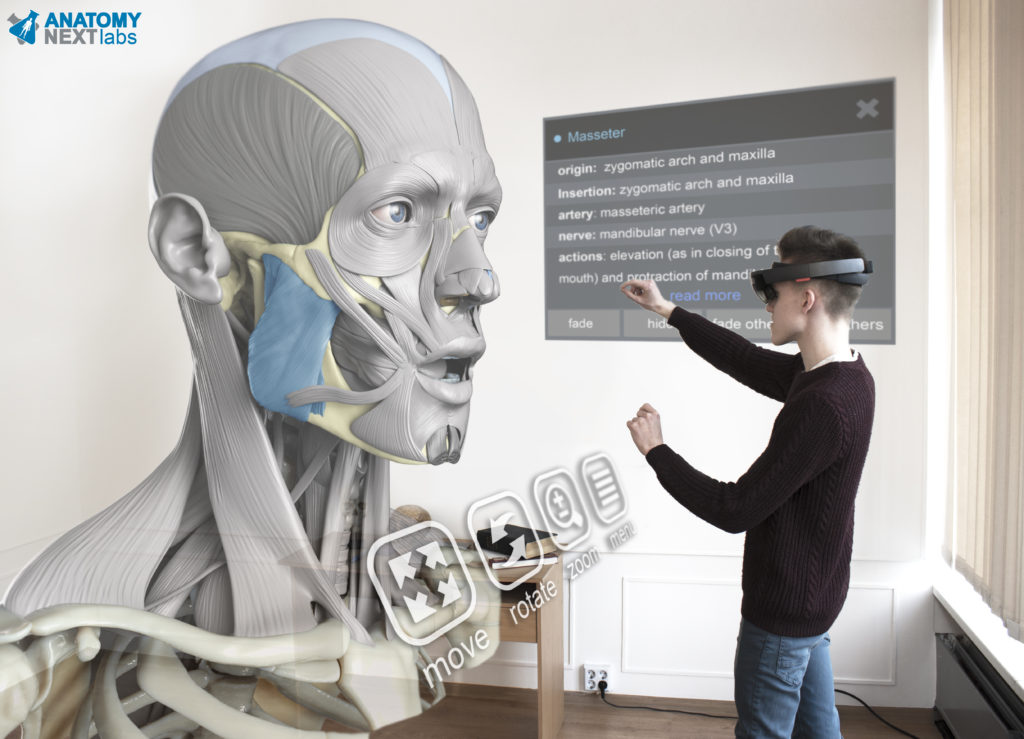
With medical errors having become the third leading cause of death in the US, a team of Eastern Europeans has put together an AR program to help train fledgling doctors.
The program has been pithily described as a “digital atlas of the human head and neck” and will have completed a full map of the male body by early spring of next year. The Seattle-based company already has pilot programs running with several US universities and are looking forward to speaking spots on major tech events like the Digital Freedom Festival. The team of group of medical professionals, developers, and 3D visualization specialists are setting their sights no lower than becoming the standard guide for anatomy students at all medical schools worldwide.
One of the major problems facing the medical community is the ever-growing amount of information they are required to retain. As our understanding of the human body and medical conditions accelerates text books are finding it increasingly difficult to keep up, and millennials now entering the profession are used to learning online.
Anatomy Next has been able to achieve a unique degree of precision by ensuring medical professionals work side by side with 3D visualization specialists. Added to which the product development team consists of medical students, which contributes first-hand experience in understanding student’s learning habits and their most common frustrations.
The 3D Anatomy Atlas allows trainee doctors to rotate, zoom and view isolated muscles, bones, nerves and blood vessels. They can also hide and fade structures to see their location in relation to other tissues, organs, and structures and combine them with detailed descriptions of muscle origin, insertion, function, innervation, and blood supply.
“We are replacing outdated textbooks with digital learning technology,” said Sandis Kondrats, CEO of Anatomy Next, “no other anatomy application currently available can offer the detail and the depth – literal depth – of the tissue and structural relationships that is available through this technology”.
The company has already closed a $500,000 funding round and is embarking on a second round of funding. If that wasn’t enough, the company have also had contact from a medical student in Ukraine who requested access after struggling to make it to class amid the conflict.




